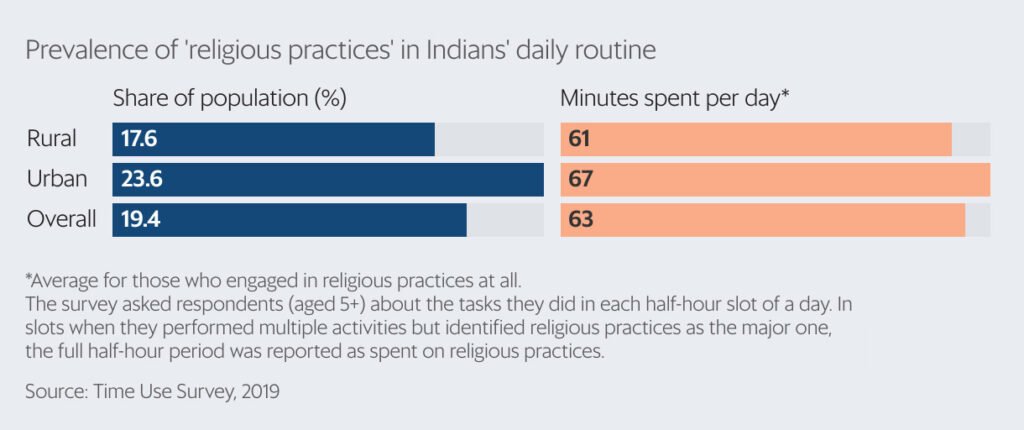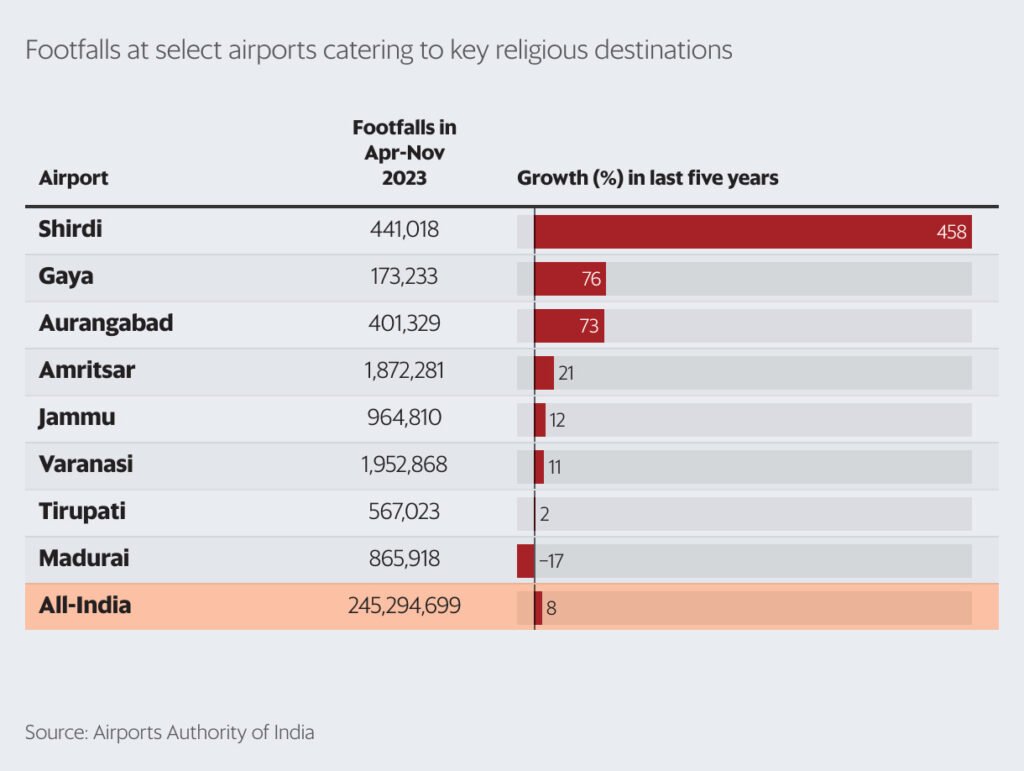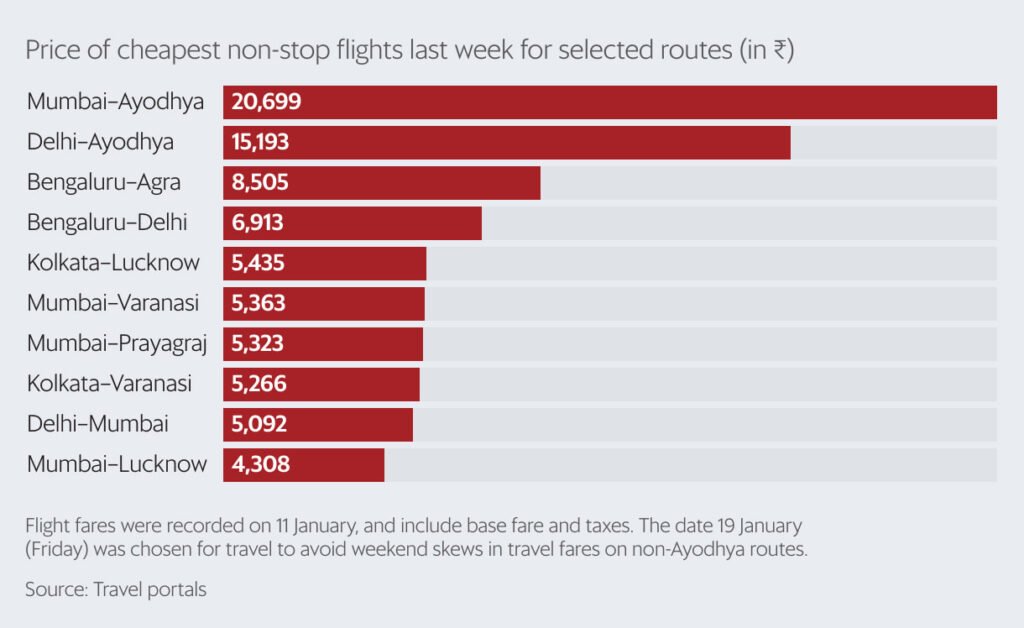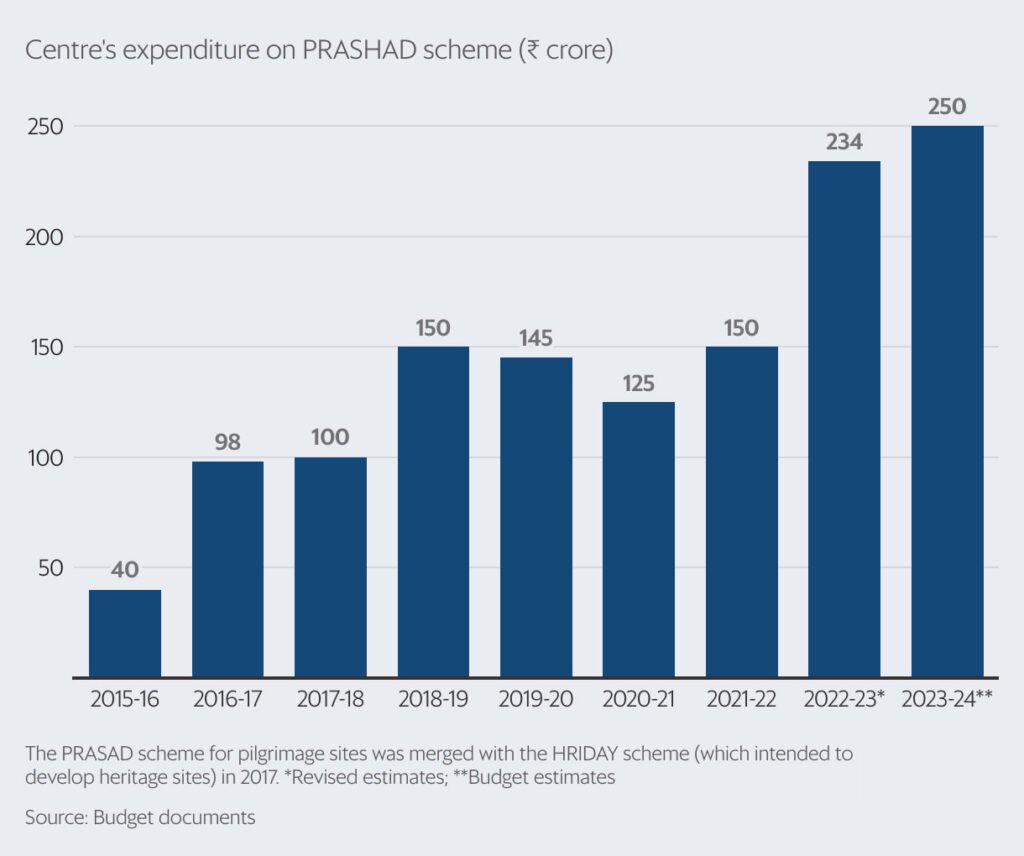In the past five years, airports in religious towns like Shirdi, Gaya, Aurangabad, and Amritsar have experienced a remarkable upswing in footfalls, surpassing the growth rate of air passengers in India, as per the latest analysis.
The Rise of Ayodhya as a Religious Tourism Hub
The recent consecration ceremony of the Ram temple in Ayodhya has catapulted the ancient city into the limelight as the next significant destination for religious tourism in India. With its rich tapestry of cultures and religions, India has long been a magnet for religious tourists. From the bustling temple ghats of Varanasi to the sacred tomb of Khawaja Moinuddin Chishti at Ajmer Sharif and the iconic Golden Temple in Punjab, the country boasts a plethora of revered sites.
Growth in Religious Tourism
Religious tourism represents the largest segment of India’s thriving tourism industry, experiencing substantial growth of nearly 40% in the past year, as reported by SOTC Travel, a leading tourism firm. Recognizing the immense potential for further expansion, the government has initiated endeavors to enhance the accessibility and infrastructure of key pilgrimage and heritage destinations.
Exploring the Spiritual Landscape of India
According to a 2021 survey conducted by the US-based Pew Research Center, the majority of Indians profess a belief in the existence of a higher power, underscoring the deeply entrenched spiritual ethos. The data gleaned from the government’s Time Use Survey reveals that urban Indians, in particular, display a stronger inclination towards religious practices, dedicating an average of 67 minutes per day compared to 61 minutes among their rural counterparts.
Pilgrimage Sites and Visitor Statistics
The renowned Tirupati temple, known for its transparency in reporting footfall statistics, has already welcomed over 1.3 million visitors in the early months of this year. This fervent pilgrimage activity is indicative of the enduring allure that religious sites hold for devotees and tourists alike, making them pivotal to India’s burgeoning tourism landscape.
By crafting a narrative that highlights the cultural and religious significance of Ayodhya and delves into the substantial growth of religious tourism, it is evident that India’s spiritual allure continues to captivate visitors from all corners of the globe. As the country continues to enhance its tourism infrastructure and promote religious heritage, the trajectory of its religious tourism sector seems poised for continued expansion and influence.


Exploring the Surge in Religious Tourism Through Air Travel
The surge in religious tourism isn’t just a matter of belief; it’s also making waves in the world of air travel. While precise data on the number of pilgrims is hard to come by, the impact is visible in the increased passenger traffic at smaller airports servicing pilgrimage destinations. The footfalls at airports in areas like Shirdi, Gaya, Aurangabad, Amritsar, and others known for their religious significance have outpaced the overall growth in air passenger numbers across India over the past five years. This trend underscores the growing appeal of religious tourism and its significant impact on the aviation sector.
Tracking the Soaring Air Traffic to Pilgrimage Sites
The surge in interest and demand for religious tourism is further evidenced by the notable spike in airfares to Ayodhya ahead of the much-anticipated consecration. The increased airfares have drawn attention to the remarkable fervor surrounding religious travel. This surge isn’t only about the spiritual journey; it’s shaping the dynamics of air travel, reflecting a profound trend in the tourism industry.
Unveiling the Pilgrimage-Driven Aviation Boom
Highlighted by escalating airfare prices and the remarkable rise in passenger counts at local airports, the religious tourism rush is redefining the landscape of air travel. Although concrete pilgrim count data may be elusive, the telling increase in footfalls at these airport hubs points towards a significant shift in travel patterns. The upsurge in religious tourism is not only reshaping the map of pilgrimage destinations but is also leaving an indelible mark on the aviation industry.
Delving into the Phenomenon of Religious Air Travel
The growing fervor surrounding religious tourism is not only a matter of faith; it’s also a driving force behind the recent surge in air travel to pilgrimage sites. The striking upturn in footfalls at smaller airports servicing these religiously significant locales is indicative of a larger trend that’s reshaping the dynamics of the aviation sector. As fervent travelers embark on spiritual journeys, the impact of religious tourism on air travel becomes increasingly pronounced.


State Efforts to Boost Religious Tourism
Upon assuming office, the Narendra Modi government introduced the Pilgrimage Rejuvenation and Spiritual Augmentation Drive (PRASAD) as a means to enhance tourism at specific religious sites by providing financial support to states. This initiative has targeted 73 destinations, including lesser-known locations, with nearly one-third located in the north-eastern region. The government has allocated a substantial ₹1,629 crore for 46 projects as part of this endeavor.
Notably, 18 approved projects are anticipated to create around 2.5 million employment opportunities, based on government projections. Following its merger with a comparable heritage site program in 2017, the initiative underwent a name change to PRASHAD, with the addition of ‘H’ symbolizing ‘heritage.’


Unleashing Opportunities in Religious Tourism
The burgeoning wave of religious tourism in India presents a ripe opportunity for businesses to explore untapped markets. With the surge in pilgrimages, industries such as hospitality, fast-moving consumer goods (FMCG), quick-service restaurant chains, and infrastructure-related sectors stand to benefit from this growing trend. As the landscape of India’s tourism continues to evolve, the impact of this religious renaissance on various businesses remains to be seen, driven by the diverse multitude of devotees and their evolving preferences.
The escalating patronage towards pilgrimage destinations has created a fertile ground for businesses to delve into new avenues for growth and expansion. From the development of lodging facilities and accommodations to the demand for consumer products and services, the spillover effects of religious tourism offer a cornucopia of prospects for entrepreneurial ventures in multiple sectors. As the influx of pilgrims continues to shape the tourism landscape, the extent to which businesses will capitalize on these emerging trends remains a subject of keen anticipation.











